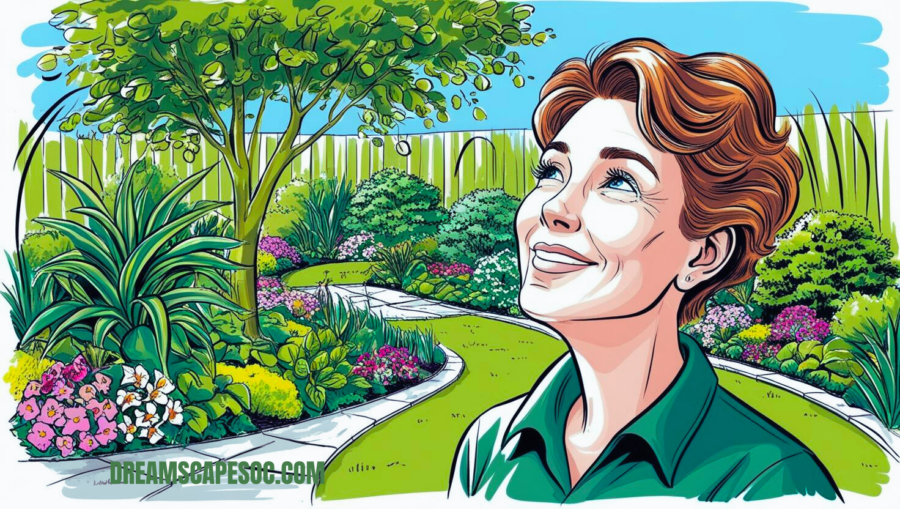What Are Raised Garden Beds?
Raised garden beds are essentially garden plots built up above the ground, usually framed by wood, metal, bricks, or other sturdy materials. They range in height, from a few inches to several feet, and can be as simple or elaborate as you’d like. Think about having more control over the soil, drainage, and available space in a garden that is somewhat elevated rather than planted directly in the ground.
What, therefore, makes them so outstanding? First of all, if your yard has poor or compacted soil, raised beds allow you to improve the soil conditions. They’re also easier to weed and manage, and because they’re higher, they’re a bit harder for pests to get into.
Elevate Your Outdoor Space—Explore Exclusive Landscaping Concepts
Why Choose Raised Garden Beds?
- Better Soil Quality: One significant advantage of raised beds is that you control the soil. Filling your bed with a nutrient-rich mixture is an option. Unlike traditional gardens, where you’re stuck with the soil in your yard, raised beds let you start fresh with the right mix of soil, compost, and organic material.
- Fewer Weeds and Pests: Keeping weeds at bay is much easier with raised beds because they don’t have direct access to the surrounding soil, where weeds typically sprout up. Raised beds are also less accessible to some ground-dwelling pests, making it easier to manage your garden.
- More straightforward to Reach: Gardening doesn’t have to mean lots of bending and kneeling. Raised beds, significantly taller ones, are easier on your back and knees. If mobility is a concern, a waist-high raised bed can be a game-changer, letting you garden comfortably without strain.
- Longer Growing Season: Soil in raised beds heats up faster in spring, letting you start planting sooner. The improved drainage also prevents the roots from getting too waterlogged, which is especially handy if you live in an area with a lot of rain.
Transform Your Outdoor Space Today – Download Your Free Landscaping and Gardening Checklist
| Material | Pros | Cons | Cost | Lifespan |
| Wood | Natural, easy to use | May rot | $$ | 5-15 years |
| Metal | Durable, modern look | Heats up in the sun | $$$ | 10-20 years |
| Bricks | Sturdy, insulates well | Heavy, costly | $$$$ | 20+ years |
| Concrete | Long-lasting, affordable | Bulky, not stylish | $$ | 20+ years |
| Plastic | Lightweight, weather-resistant | May fade/crack | $$ | 10-15 years |
| Stone | Attractive, very durable | Expensive, hard to move | $$$$ | 20+ years |
Key Takeaway: Raised garden beds make gardening simpler by allowing you to manage soil quality, keep pests at bay, and reach your plants more easily. This guide covers all the essentials to help you create and maintain a raised bed that thrives year-round.
How to Build a Raised Garden Bed
- Gather Your Materials: The materials you’ll need depend on how big and what style your raised bed is. Typically, you’ll want to have wood (cedar and redwood are great options), soil, compost, a shovel, a drill, screws, and a level. If you opt for metal or bricks, ensure you have the right tools to work with those materials.
- The first step in building your bed is to decide on its size. Reaching in from either side is easy because most raised beds are about 4 feet wide. Once the size has been established, In your yard, pick a spot that gets lots of water and sunlight. Make sure the frame is sturdy and level before screwing it together.
- Make sure there is enough room for the frame to be placed when it has been constructed. Removing grass and weeds is a good idea, and you might want to lay down cardboard or landscape fabric to prevent future weeds from sprouting up. Finally, fill the bed with a high-quality mix of soil, compost, and organic matter. This blend will nourish your plants and help them grow strong.
Pro Tip: Using untreated cedar or redwood will help your bed last longer since these woods resist rot naturally. They’re well worth the investment for a bed that’ll stand up to the elements.
Choosing Soil and Planting Tips
The right soil mix is essential for a healthy garden and raised beds make it easy to get the right blend.
- Ideal Soil Mix: A balanced mix for raised beds typically includes topsoil for bulk, compost for nutrients, and either sand or another soil conditioner to improve drainage. A good ratio is 60% topsoil, 30% compost, and 10% sand or conditioner. This blend gives your plants the nourishment and support they need to thrive.
- Companion planting: To get the most out of your garden, consider companion planting. This is how certain plants are grouped to encourage growth or deter pests. For example, basil can improve tomato flavor, while marigolds can help keep pests away from tomatoes.
- Avoid Overcrowding: While raised beds are ideal for close planting, you’ll still want to give each plant enough space to grow fully. Research how much room your plants need to ensure you don’t crowd them and stunt their growth.
Maintaining Your Raised Bed Garden
Raised garden beds are easy to maintain, but they do require regular attention.
- Raised beds can dry out faster than in-ground gardening, especially in warmer weather, so they require more frequent watering. Watering is made easy and efficient using a drip irrigation system, which may provide moisture directly to the roots.
- Seasonal Care: As the seasons change, so do your bed’s needs. In spring, adding a layer of compost helps replenish nutrients. In winter, you might want to cover the bed with mulch or a protective cloth to prevent erosion and keep the soil in good condition.
- Adding Nutrients: Over time, the soil in raised beds will need a little boost. Add organic fertilizers or soil amendments like worm castings or compost to keep your plants happy and healthy.
Tip for Success: Rotating crops each year helps prevent soil depletion and reduces the chances of plant diseases.

Troubleshooting Common Issues
Even though raised beds make gardening more manageable, you may still encounter a few issues. Here are some quick solutions for common raised bed problems.
- Soil Erosion and Settling: Heavy rains can cause the soil in raised beds to settle or erode. To keep your bed topped up, regularly add fresh soil or compost. This keeps the bed height consistent and ensures nutrients aren’t lost over time.
- Pest Control: While raised beds help minimize pests, they don’t make them disappear entirely. Using row covers or planting pest-repellent herbs like rosemary and thyme can keep many bugs away.
- Dealing with Weather Extremes: Consider temporary coverings for harsh weather, like frost or extreme heat. Frost blankets or even a DIY greenhouse can protect plants from cold, while a shade cloth is helpful in shielding sensitive plants from too much sun.
Finishing Up
Planting a range of plants in raised garden beds, such as flowers, vegetables, and herbs, helps to maintain healthy soil, deters pests, and makes gardening easier. You can create a lovely, low-maintenance garden that takes little effort and yields many benefits by adhering to these important recommendations while designing, planting, and caring for your raised beds.
Dive into related articles now for even sharper insights—you won’t regret it!
Urban Gardening Solutions: Innovative Approaches for City Dwellers
FAQs
What’s the ideal depth for a raised garden bed?
Raised beds should ideally be at least 6-12 inches deep, though root vegetables like carrots may need about 18 inches for healthy growth.
Can I use any soil in a raised bed?
Specially mixed soil is best for raised beds. For optimal growth, aim for a combination of topsoil, compost, and organic material.
How often should I water my raised garden bed?
Watering depends on your climate, but raised beds typically need water every other day in warm weather and less frequently in cooler seasons.
What materials work best for making raised beds?
The best woods are those that don’t rot, like redwood or cedar. Metal and stone can also work, though they may need extra insulation for plant protection.
Can I plant perennials in raised garden beds?
Perennials such as strawberries, herbs, and flowers do well in raised beds. When planning your layout, just keep their long-term growth in mind.

